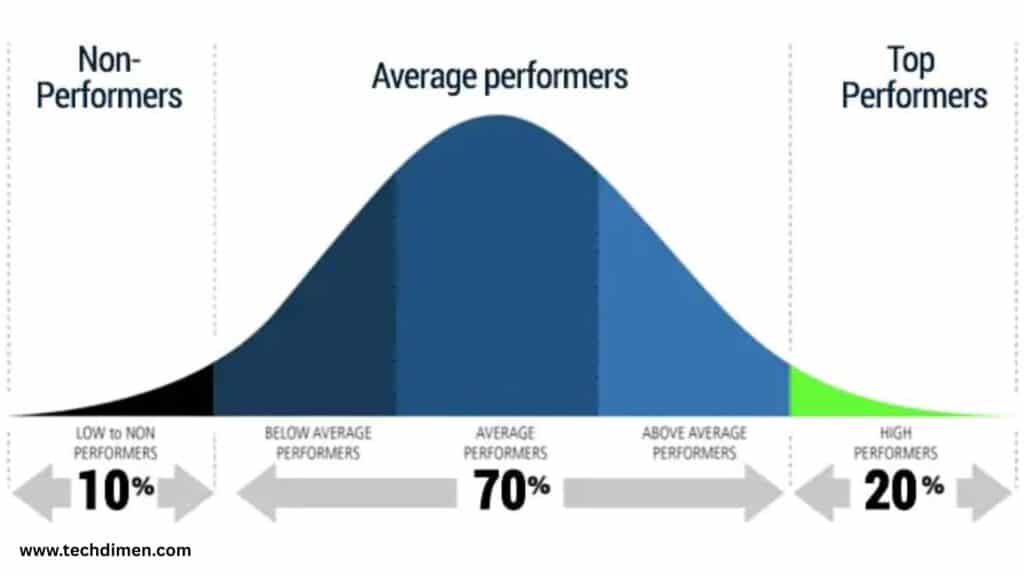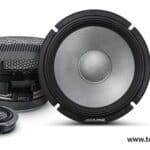Glossary of Terms When Buying a TV can feel like stepping into a maze filled with confusing jargon and specs. You might ask yourself, “What’s the real difference between OLED and QLED?” or “How important is HDR10 for my viewing experience?” This glossary of terms when buying a TV breaks down the key concepts and tech, so you can shop smart and pick the perfect TV for your needs. From TV tech terms simplified to fully understanding TV specs explained, this guide will help you navigate the maze of TV terminology. Whether you’re streaming movies, watching sports, or gaming, knowing the right terms will save you time and money.
TV Display Technologies

When looking at TVs, the display technology defines how the image is produced and how it looks. The main types you’ll encounter are LED, OLED, QLED, and Micro LED.
LED TVs
LED TVs use light-emitting diodes to illuminate an LCD screen. They tend to be affordable and bright, making them great for brightly lit rooms. However, their contrast ratios and black levels usually don’t match OLEDs.
OLED TVs
OLED (Organic Light Emitting Diode) TVs light up each pixel individually, allowing for true blacks and excellent contrast. This makes them ideal for movie lovers and viewers in dark rooms. The downside is a higher price point and potential for screen burn-in with static images over time.
QLED TVs
QLED TVs use Quantum Dot technology to boost brightness and color accuracy. They excel in brightly lit environments by producing vivid colors and higher peak brightness levels. QLED is a solid choice for well-lit living rooms.
Micro LED TVs
Micro LED is cutting-edge tech combining the deep blacks of OLED with the brightness of LED. While they promise the best picture quality, Micro LED TVs are still very expensive and rare.
Panel Types: IPS and VA
Two common LCD panel types affect viewing angles and contrast. IPS panels offer wide viewing angles and accurate colors, but their contrast is moderate. VA panels provide deeper blacks and better contrast but have narrower viewing angles. Depending on your room setup, this can influence your TV choice.
Mini-LED and Full-Array Local Dimming
Mini-LED technology places thousands of tiny LEDs behind the screen to enhance brightness and improve contrast by controlling smaller lighting zones. Full-array local dimming (FALD) works similarly, dividing the backlight into zones that dim or brighten independently, giving deeper blacks and richer images.
Refresh Rates: Native vs Advertised
Many TVs advertise refresh rates like 120Hz, but some achieve this through software tricks on a native 60Hz panel. True 120Hz panels refresh the image 120 times per second, resulting in smoother motion a major plus for gaming and fast-paced sports.
Picture Quality: Glossary of Terms When Buying a TV What Really Makes an Image Pop

Picture quality depends on more than just resolution. Understanding HDR, color range, contrast, and processing will help you evaluate TVs effectively.
HDR Standards: HDR10, HDR10+, Dolby Vision, and HLG
High Dynamic Range (HDR) enhances the range between the darkest and brightest parts of the picture. HDR10 is the baseline standard supported by nearly all HDR TVs. HDR10+ and Dolby Vision use dynamic metadata to adjust HDR effects scene by scene for more precise color and contrast. Hybrid Log-Gamma (HLG) is designed mainly for live broadcasts.
Color Gamut and Bit Depth
The color gamut represents how many colors a TV can display. A wider gamut like DCI-P3 offers richer, more lifelike colors than the standard Rec.709. Bit depth affects color precision; 10-bit panels display over a billion colors, reducing banding and producing smoother gradients.
Contrast Ratio: What to Trust Glossary of Terms When Buying a TV
Contrast ratio measures the difference between the darkest black and brightest white a TV can show. Beware of “dynamic contrast” claims, which often exaggerate real performance. Technologies like local dimming offer genuine improvements in contrast by dimming parts of the screen independently.
Upscaling and AI Picture Processing
Upscaling helps lower resolution content look better on 4K or 8K screens. Modern TVs often include AI-powered upscaling, which intelligently sharpens details and reduces noise, improving overall picture clarity.
Peak Brightness Measured in Nits
Peak brightness defines how bright your TV can get, which is crucial for HDR content. A minimum of 600 nits is desirable for a satisfying HDR experience, while premium models reach 1000 nits or more, making them suitable for bright rooms.
Performance Metrics: Speed and Smoothness Matter Glossary of Terms When Buying a TV

If gaming or watching sports, certain performance specs can make a big difference.
Input Lag: Why It Matters
Input lag is the delay between pressing a button on a controller and seeing the response on screen. Serious gamers aim for input lag below 20 milliseconds to maintain smooth, responsive gameplay.
Response Time and Motion Handling
Response time is how quickly a pixel can change color. Faster response times reduce motion blur and ghosting during fast action sequences.
Refresh Rate and Frame Rate Explained Glossary of Terms When Buying a TV
The refresh rate (measured in Hertz) is how often the TV updates the picture per second, while frame rate is the number of frames your content delivers. Higher refresh rates like 120Hz enable smoother motion, especially for sports and gaming.
Variable Refresh Rate (VRR), FreeSync, and G-Sync
VRR synchronizes your TV’s refresh rate with your gaming device, preventing screen tearing. AMD’s FreeSync and NVIDIA’s G Sync are the most common implementations, supported by many modern TVs.
Motion Smoothing vs Black Frame Insertion
Motion smoothing artificially adds frames to reduce judder but can create the “soap opera effect,” making films look unnatural. Black Frame Insertion reduces motion blur by inserting black frames but may cause flickering for some viewers.
TV Size and Viewing Distance: Getting the Fit Right

Choosing the right screen size is about matching your space and seating distance.
Glossary of Terms When Buying a TV How Far Should You Sit?
For 4K TVs, sitting closer lets you appreciate the high resolution. For example, a 55 inch TV is best viewed from about 5.5 to 8 feet, while a 65-inch screen works well from 8 to 10 feet.
| Screen Size (inches) | Ideal Viewing Distance (feet) |
|---|---|
| 43 | 4.5 to 6 |
| 50 | 5 to 7 |
| 55 | 5.5 to 8 |
| 65 | 8 to 10 |
| 75 | 9 to 12 |
Aspect Ratio and Curved vs Flat Screens
Most TVs use a 16:9 aspect ratio, suitable for most content. Curved TVs can add immersion in smaller rooms but may introduce reflections and distort viewing angles in larger setups.
Wall Mount Compatibility: VESA Standards
If you plan to mount your TV, check the VESA pattern (e.g., 200x200mm), ensuring compatibility with wall mounts and stands.
Audio Technology: Glossary of Terms When Buying a TV Don’t Forget the Sound
Great visuals lose impact without decent audio.
Built In Speakers and Their Limitations
TV speakers tend to be small, limiting bass and volume. Most users will benefit from an external soundbar or home theater system for richer audio.
Surround Sound Formats: Dolby Atmos and DTS:X
These formats create immersive 3D audio. Dolby Atmos is more common in TVs and soundbars, delivering overhead sound effects and greater realism.
Understanding eARC vs ARC
Enhanced Audio Return Channel (eARC) supports higher quality audio formats compared to standard ARC, making it vital for advanced soundbar setups.
Speaker Channels and What They Mean
A 2.0 channel setup has two speakers and no subwoofer. A 2.1 channel adds a subwoofer for deeper bass. A 5.1 channel system uses five speakers plus a subwoofer for full surround sound.
Connectivity and Smart Features Glossary of Terms When Buying a TV
Modern TVs are hubs for streaming, gaming, and smart home control.
HDMI Versions: Why HDMI 2.1 Matters
HDMI 2.1 supports 4K at 120Hz, Variable Refresh Rate (VRR), and Auto Low Latency Mode (ALLM). These features are essential for next-gen gaming consoles like the PS5 and Xbox Series X.
Other Ports: USB, Optical Audio, Ethernet
USB ports allow you to play media from drives, optical ports connect to audio systems, and Ethernet provides reliable internet for streaming.
Glossary of Terms When Buying a TV Platforms: Choosing Your Interface
Common smart platforms include Samsung’s Tizen, LG’s webOS, Roku TV, Google TV, and Amazon Fire TV. Each offers different app selections and ease of use.
Voice Assistants and Casting When Buying a TV
Most smart TVs support Alexa, Google Assistant, or Siri, enabling voice commands. Casting options like Chromecast built-in and AirPlay let you stream content directly from your phone or tablet.
Decoding Extra Features and Marketing Buzzwords Glossary of Terms When Buying a TV
Some terms may sound fancy but don’t always mean better quality.
Quantum Dots Explained
Quantum dots improve color accuracy and brightness, especially on QLED TVs. This technology enhances the vibrancy of colors you see.
AI Picture and Sound Enhancements Glossary of Terms When Buying a TV
TVs often claim “AI enhanced” processing to improve image and audio. While helpful, these features are not a substitute for good hardware.
Ambient and Art Modes
Certain TVs can display artwork or photos when idle, transforming your screen into a digital picture frame.
Anti-Glare and Thin Bezels
Anti-glare coatings help reduce reflections. Thin bezels make TVs look sleek but don’t impact performance.
Energy Efficiency Ratings
TVs typically consume 50 to 200 watts. Look for energy-saving modes to reduce power use without sacrificing picture quality.
What Glossary of Terms When Buying a TV Specs Should You Focus On?
The most important specs depend on your use case but generally include resolution, HDR support, HDMI 2.1 ports, and panel type.
Must-Have Specs for Most Buyers
- 4K resolution as the new standard
- HDR support (HDR10 at minimum)
- At least one HDMI 2.1 port for futureproofing
- OLED or high-quality QLED panel for superior picture quality
Specs You Can Ignore or Take with Caution
- Dynamic contrast ratios often exaggerate real performance
- AI claims without independent testing
- Ultra-high refresh rates not backed by native hardware
Matching TV Features to Your Needs
If you mostly stream shows and movies, a smart LED TV with HDR10 and good picture processing will suffice. Sports fans should prioritize low input lag and a native 120Hz refresh rate. Gamers benefit most from HDMI 2.1, VRR, and low input lag, ideally on OLED or premium QLED panels. For home theaters, OLED TVs with Dolby Vision and Dolby Atmos support deliver cinematic experiences. Bright room viewers should focus on high peak brightness and anti-glare coatings, where QLED or Mini-LED TVs shine.
FAQs
What are the most confusing terms when buying a new TV?
Shopping for a TV feels overwhelming when you’re bombarded with technical jargon. Terms like HDR, refresh rate, OLED, and resolution can easily confuse buyers. But once you understand what they mean, making the right choice becomes much simpler. That’s exactly why glossaries like this exist to decode the lingo and help you shop smart.
What does 4K or UHD mean When Buying a TV?
You’ve probably seen “4K” or “UHD” slapped across TV boxes and ads. Both stand for Ultra High Definition, referring to a resolution of 3840 x 2160 pixels. In simple terms, it means sharper images, more detail, and crisper visuals, especially on larger screens. It’s now the standard for modern televisions.
Is there a difference between LED, OLED, and QLED?
Yes, there’s a huge difference, and knowing it can save you money or frustration. LED TVs use traditional backlighting with LCD panels. OLED TVs skip the backlight entirely each pixel lights up on its own, delivering incredible contrast and true blacks. QLED, a term from Samsung, combines LED backlights with quantum dots for brighter, more vibrant colors. Each has its perks depending on your budget and viewing habits.
What does refresh rate mean, and why does it matter?
The refresh rate, measured in Hertz (Hz), tells you how often your screen updates every second. A standard TV runs at 60Hz, while some offer 120Hz or higher. Higher refresh rates can smooth out fast moving scenes perfect for sports or gaming but be careful with marketing gimmicks like “Motion Rate 240,” which often exaggerates performance.
Should I care about HDR Glossary of Terms When Buying a TV?
Definitely. HDR, short for High Dynamic Range, boosts contrast, color, and brightness levels. It makes images pop with realism. But not all HDR is equal. Look for TVs supporting HDR10, Dolby Vision, or HDR10+ for the best results. The better the HDR format, the more lifelike your viewing experience.
What is Glossary of Terms When Buying a TV, and do I really need it?
A Smart TV connects to the internet, giving you access to apps like Netflix, YouTube, Hulu, and more no extra streaming device needed. It’s convenient if you love streaming content directly from your TV. But if you already use devices like Roku or Fire Stick, you can skip the Smart TV premium if budget is tight.
What does screen size versus viewing distance mean?
Screen size tells you how big the diagonal measurement of your TV is, typically in inches. But viewing distance matters just as much. Sit too close to a huge TV, and the picture feels pixelated. Sit too far, and you miss the details. A good rule? For 4K TVs, multiply the screen size by 1.5 to 2.5 to find your ideal viewing distance in inches.
Is resolution more important than screen size?
It depends on your room setup. Higher resolution (like 4K or 8K) gives you sharper images, especially on larger screens. But for smaller spaces, you might not notice the difference. Always balance resolution with screen size and viewing distance to get the best picture for your space.
Final Thoughts
Knowing these terms empowers you to pick a TV that fits your room, lifestyle, and budget without getting lost in marketing fluff. Focus on what impacts your viewing and listening experience most, and use this glossary as a reference whenever you shop. The right TV is out there now you have the tools to find it.
Recommended Resources for Further Research
- Rtings TV Reviews Detailed, up-to-date TV tests
- CNET TV Buying Guide 2025 Expert buying advice
- HDMI.org Official HDMI 2.1 specifications and benefits
This comprehensive TV buying guide brings clarity to complex specs and buzzwords, helping you understand TV terminology explained and make the best choice in 2025.

Jhon AJS is a tech enthusiast and author at Tech Dimen, where he explores the latest trends in technology and TV dimensions. With a passion for simplifying complex topics, Jhon aims to make tech accessible and engaging for readers of all levels.







